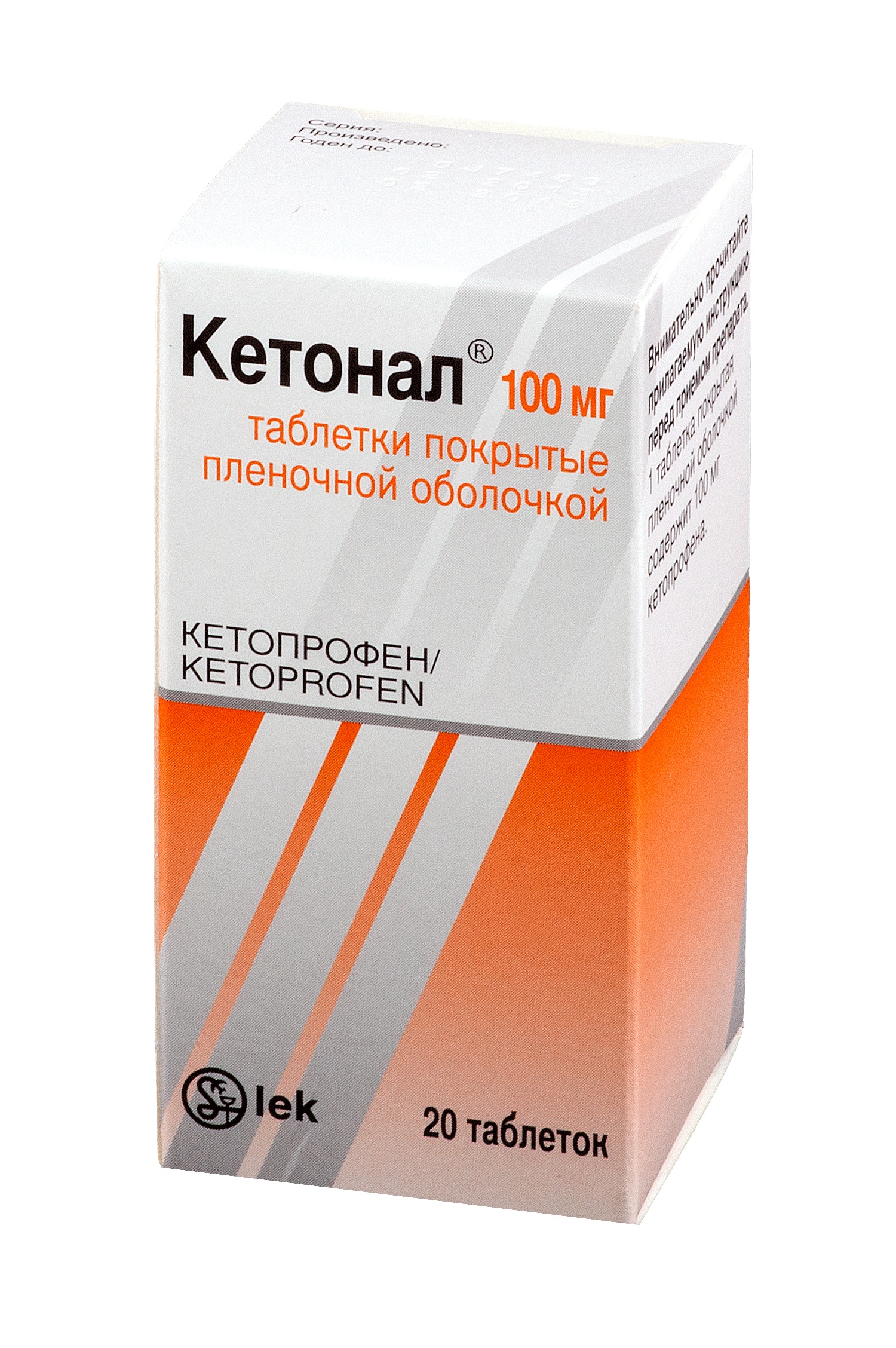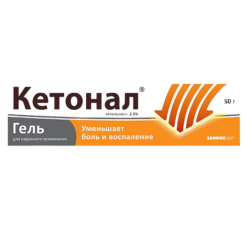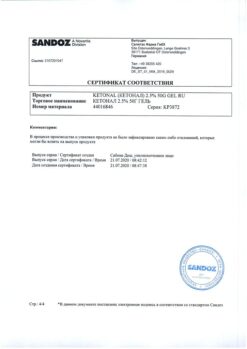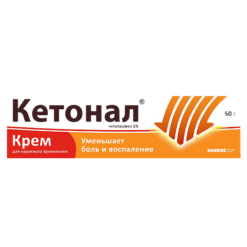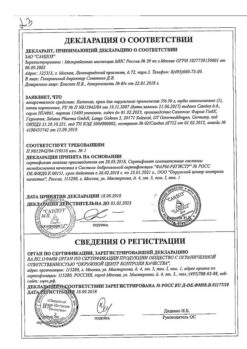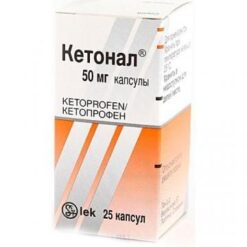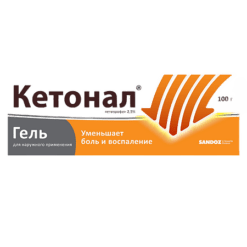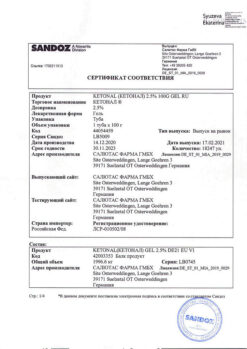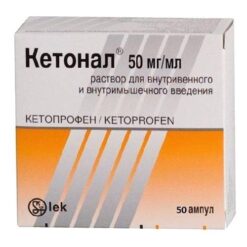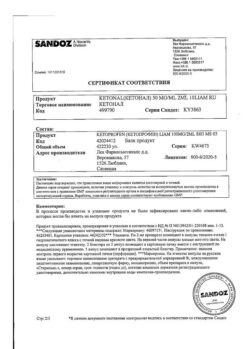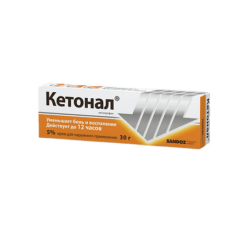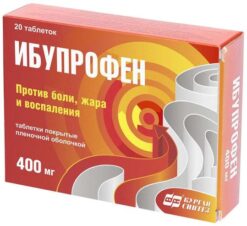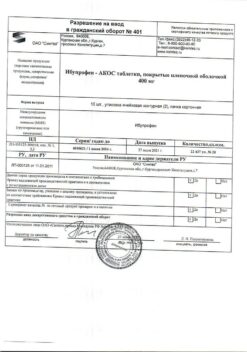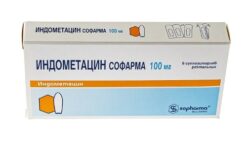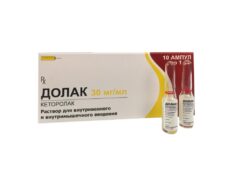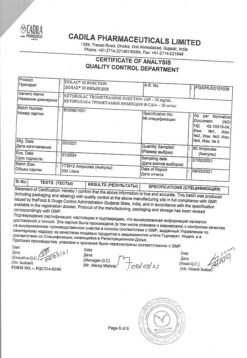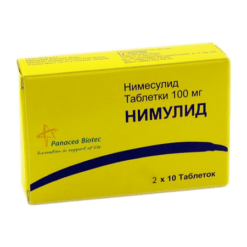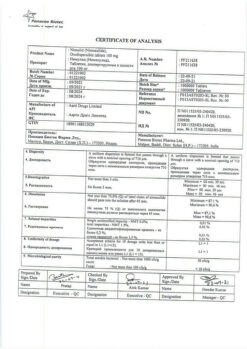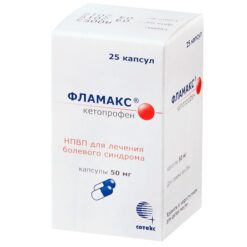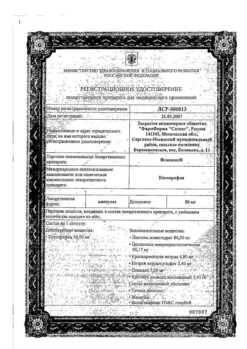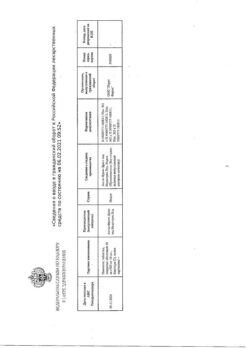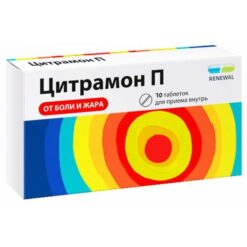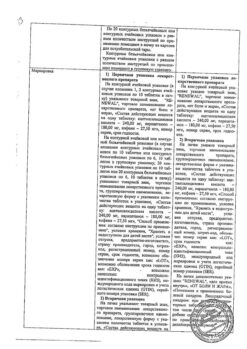No products in the cart.
Ketonal, 100 mg 20 pcs.
€5.01 €4.45
Description
Ketoprofen is rapidly absorbed from the gastrointestinal tract. Bioavailability after oral administration of 50 mg of ketoprofen is 90% and increases consistently with increasing dose.
Eating does not affect the total bioavailability (AUC) of ketoprofen, but reduces the rate of absorption. Ketoprofen is 99% bound to blood plasma proteins, mainly to the albumin fraction. The volume of distribution is 0.1-0.2 l/kg. After oral administration ketoprofen peak plasma concentration is reached after 1h.22 min.
In synovial fluid the concentration of ketoprofen reaches 50% of the plasma concentration (1.5 µg/ml); ketoprofen is slowly eliminated from synovial fluid – over 24 hours. It is metabolized in the liver, where it conjugates with glucuronic acid. About 75% of ketoprofen is excreted with urine, mainly as a conjugate with glucuronic acid.
Less than 10% is excreted unchanged in the feces. Ketoprofen does not cumulate in the tissues. The half-life of ketoprofen reaches 2 hours. In patients with renal failure ketoprofen is excreted slower and its half-life is prolonged by 1 hour. They also have a decreased clearance of ketoprofen.
In severe renal insufficiency a dose reduction is required. In patients with hepatic insufficiency, the concentration of ketoprofen in plasma is increased approximately 2-fold, which requires prescribing the lowest possible daily dose. Ketonal® forte has anti-inflammatory, analgesic and antipyretic effects.
The mechanism of action is associated with inhibition of the biosynthesis of prostaglandins and leukotrienes by inhibiting the activity of cyclooxygenase enzyme (cyclooxygenase-1 and cyclooxygenase-2) which catalyzes the synthesis of prostaglandins from arachidonic acid. Ketoprofen stabilizes the membranes of lysosomes and has anti-bradykinin activity.
Indications
Indications
1. Rheumatic diseases: rheumatoid arthritis seronegative spondyloarthritis (ankylosing spondyloarthritis, reactive arthritis) gout, pseudopodagra osteoarthritis extraarticular rheumatism (tendonitis, bursitis, capsulitis of the shoulder joint)
2. Pain syndrome: post-traumatic postoperative algodysmenorrhea pain in bone metastases in patients with cancer.
Active ingredient
Active ingredient
Composition
Composition
1 tablet contains:
Active substance:
ketoprofen – 100 mg.
Associates:
magnesium stearate,
colloidal silicon dioxide,
corn starch,
povidone,
talc,
lactose.
Coating composition:
Hypromellose, macrogol 400, indigo carmine (E132), titanium dioxide, talc, carnauba wax.
How to take, the dosage
How to take, the dosage
Adults: the drug is prescribed 1-2 caps. 2-3 times per day, or 1 tablet. 2 times a day, or 1 sustained release tablet once a day.
The capsules and tablets should be taken with or immediately after a meal, without chewing, with plenty of water or milk (available in at least 100 ml).
The oral forms may be combined with the use of rectal suppositories or external dosage forms of Ketonal (cream, gel).
The maximum daily dose (including different dosage forms) is 200 mg.
Interaction
Interaction
Ketonal should not be used in combination with other nonsteroidal anti-inflammatory drugs and salicylates. When used in combination with corticosteroids, the risk of ulceration and gastrointestinal bleeding increases.
Antioagulants (heparin and warfarin) and platelet aggregation inhibitors (i.e., ticlopidine, clopidogrel) increase the risk of bleeding. If co-administration is unavoidable, close monitoring of the patient is necessary. Ketonal reduces the effectiveness of hypotensive and diuretics.
The risk of renal failure is greater in patients who take diuretics, hypotensive agents or ACE inhibitors simultaneously with nonsteroidal anti-inflammatory drugs.
Potassium preparations, potassium-saving diuretics, ACE inhibitors, heparins (low molecular weight or unfractionated), cyclosporine, tacrolimus and trimethoprim may contribute to hyperkalemia when used concomitantly with nonsteroidal anti-inflammatory drugs. Ketonal increases the effect of oral hypoglycemic drugs and some anticonvulsants (phenytoin).
Ketonal, like other nonsteroidal anti-inflammatory drugs reduces excretion and thus increases toxicity of cardiac glycosides, lithium, cyclosporine and methotrexate. Nonsteroidal anti-inflammatory drugs may decrease the effectiveness of mifepristone.
Non-steroidal anti-inflammatory drugs should be started at least 8-12 days after mifepristone withdrawal. Concomitant use of cyclosporine with ketonal increases the risk of toxic kidney damage.
Special Instructions
Special Instructions
Ketonal® may be drunk with milk or taken with antacids in order to reduce the incidence of gastrointestinal disorders (milk and antacids do not affect the absorption of ketoprofen). During long-term use of NSAIDs it is necessary to monitor the blood, liver and kidney function, especially in elderly patients.
Caution should be exercised and BP should be monitored more frequently when using ketoprofen to treat patients with arterial hypertension, cardiovascular disease, which leads to fluid retention.
Like other NSAIDs, ketoprofen can mask the symptoms of infectious diseases.
Influence on driving and operating machinery
There are no data on the negative effect of Ketoprofen in the recommended doses on the ability to drive or operate machinery.
However, patients who have had abnormal effects while taking Ketonal® should be cautious when performing potentially hazardous activities requiring increased concentration and rapid psychomotor reaction time.
Contraindications
Contraindications
With caution: the drug should be prescribed in case of a history of peptic ulcer disease, history of bronchial asthma, clinically pronounced cardiovascular, cerebrovascular disease, peripheral artery disease, dyslipidemia, liver failure, hyperbilirubinemia, alcoholic liver cirrhosis, renal failure, chronic heart failure, arterial hypertension, In addition, the following conditions should be adhered to: – blood diseases, dehydration, diabetes, history of peptic ulcer disease, smoking, concomitant therapy with anticoagulants (e.g., warfarin), antiplatelet agents (e.g., acetylsalicylic acid), oral GCS (e.g., prednisolone), selective serotonin reuptake inhibitors (e.g., citalopram, sertraline).
Side effects
Side effects
The following gradations were used to estimate the incidence of different adverse reactions: “very often” – 10%, “often” – from 1% to ? 10%, “infrequently” – from 0.1% to 1%, “rarely” – from 0.01% to 0.1%, “very rarely” – 0.01%.
Often: dyspeptic phenomena, decreased appetite, nausea, vomiting, flatulence, abdominal pain, constipation
Infrequently: diarrhea, gastritis headache, dizziness, drowsiness skin rash
Rarely: hemorrhagic anemia, leukopenia depression, insomnia, nervousness, paresthesia visual impairment tinnitus stomatitis, gastric and duodenal ulcer hepatitis, increased transaminases and bilirubin weight gain anaphylactic shock bronchospasm, bronchial asthma attack
Very rare: Colitis and Crohn’s disease exacerbation, gastrointestinal bleeding impaired liver function acute renal failure, tubulointerstitial nephritis hypernatriemia, hyperkalemia agranulocytosis, thrombocytopenia seizures heart failure arterial hypertension rhinitis photosensitivity, Quincke’s edema, bullous rash, including Stevens-Johnson syndrome, toxic epidermal necrolysis.
Overdose
Overdose
Symptoms: nausea, vomiting, abdominal pain, vomiting blood, melena, impaired consciousness, respiratory depression, seizures, impaired renal function, renal failure.
The treatment: gastric lavage, prescription of activated charcoal, symptomatic therapy is carried out. Administration of histamine H2-receptor blockers, proton pump inhibitors, prostaglandin inhibitors is indicated. There is no specific antidote.
Similarities
Similarities
Additional information
| Shelf life | 5 years. |
|---|---|
| Conditions of storage | Keep out of reach of children at temperatures under 25°C. |
| Manufacturer | Lek d.d., Slovenia |
| Medication form | pills |
| Brand | Lek d.d. |
Other forms…
Related products
Buy Ketonal, 100 mg 20 pcs. with delivery to USA, UK, Europe and over 120 other countries.

